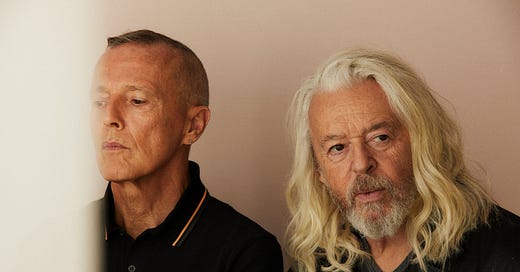Tears for Fears: new wave, pop.
Tutti intorno a me sono volti familiari,
luoghi logori, facce stanche.
Brillanti e presto per le loro gare quotidiane,
andando da nessuna parte, andando da nessuna parte.
E le loro lacrime riempiono i loro bicchieri,
nessuna espressione, nessuna espressione.
Nascondo la testa, voglio affogare il mio dolore,
nessun domani, nessun domani.
Tears for Fears “T…
Keep reading with a 7-day free trial
Subscribe to (((RADIO PIAN PIANO))) to keep reading this post and get 7 days of free access to the full post archives.



